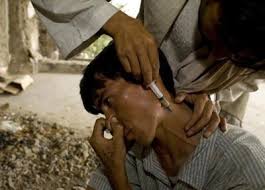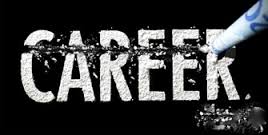Simultaneous treatment of sex and drug addiction
Simultaneous treatment of sexual addiction and drug abuse: Multiple addictions solutions

Simultaneous treatment of sexual addiction and drug abuse is very fundamental if recovery is to be meaningful and sustainable.
The trend with which addiction is changing is one that needs all the stake holders to join hand together and fight the problem from one common front. For a very long time all we have known is the monolistic addiction where one could be seen to be struggling with only one kind of substance say being an alcoholic. Things are now changing and multiple addictions are becoming the order of the day. This has necessitated experts including those from AWAREmed Health and Wellness Resource Center under the leadership of doctor Dalal Akoury to think outside the box on the best treatment approach. In most cases multiple kind of addiction will involve substance abuse and sexual addiction. Therefore experts are now applying the simultaneous treatment where a number of addiction are treated all at the same time a patient enroll in addiction medical facility for treatment.
Looking at addiction critically, we have actually been brought up in the full knowledge that drugs whether illicit or prescription drugs are actually all candidates for abuse and because of this upbringing many people wallowing in that school of thought. The question that follows next is that really the true position of the understanding of what addiction is all about? Let’s get some expert opinion from AWAREmed Health and Wellness Resource Center. From the discussion with the experts from this facility, it is very obvious that there are different kinds of addictions. That is to say that one could be addicted to drugs and alcohol, or to certain behaviors (e.g. sex) or even both. And just for clarity it is important to note that behavioral addiction may be so many and that may include addiction to sexual activities, gaming from the computer devices, gambling and many others. We are therefore at risk of either becoming victims of either of them or even both and that is when simultaneous treatment becomes relevant. Simultaneous treatment is very important in the sense that while on the surface, different addictions seem to be associated with their own unique set of behaviors they are often fueled by the same underlying feelings of guilt, shame, avoidance and trauma. Addictions interact within the individual making it difficult to tease them apart.
Simultaneous treatment of sexual addiction and drug abuse: The trends of problematic substances
When examining the trends of problematic substance use in individuals seeking help for a sexual addiction, it becomes clear that the two are indistinctly linked together. The available statistics also indicate that majority of people who are struggling with sexual addiction also meet the criteria for alcohol or drug addiction. Studies have also established that many individuals who are struggling with sexual addiction problems have actually admitted to using substances mostly to help them in dealing with, or escaping from, the pain that is caused by their sexual behavior. Besides that it is also very common that many people are currently using substances to get over their inhibitions in order to engage in sexual behaviors that might be uncharacteristic for them if they were not drunk or high. This further explains the significance of multi addiction and the need for simultaneous treatment.
We must therefore seek for information by way of investigating how multiple addictions can feed into one another. This is very important because it is possible that individuals may use one of their addictions to mask or dismiss the other addiction and this could be influenced by various reasons including fear and shames especially those elements that are considered shameful addiction. Like for instance, an individual may deny having a problem with sexual addiction and insist completely that their problematic sexual behavior is only caused by intoxication. However, the truth of the matter in this case may be that the drugs or alcohol are merely concealing the pain and shameful acts that are associated with the sexual addiction thereby helping the person to be spared from the emotional consequences of his or her actions. By the same token, both addictions may work on intensifying one another in such a way that the person only engages in their sexual addiction under the influence of alcohol or drugs. These rituals then serve to protect the addiction and ensure that patterns of use are stable and predictable and this can be very dangerous if not dealt with expeditiously.
A major concern with treatment of substance use disorder alone is that any untreated sexual addiction often precipitates a relapse of substance use. Dealing with one addiction while ignoring the other may end up intensifying the problem that has not been addressed. A good example would be when a person in early recovery from a substance addiction turns to sexual performance enhancers in order to continue the ritualized sexual behavior that was previously enhanced by the substance use. This sexual behavior can continue to be problematic for the individual. The individual may continue to feel a sense of shame and pain. Therefore recovery is about addressing the entire addictive process, not just those associated with a particular substance or behavior. The addictive process, whether it be related to sexual behavior or substances is often characterized by a pattern of secrecy, cognitive distortions and rituals. Therefore recovery from addiction regardless of type, would involve embracing and attempting to live a life of honesty, authenticity and emotional growth.
Fortunately, many underlying similarities between multiple addictions mean that the underlying framework for concurrent treatment is quite effective. According to a recent study conducted at Bellwood Health Services confirms that individuals with a comorbid sexual addiction and substance use disorder attending the same treatment centre as those with only sexual addiction, have comparable treatment outcomes at six months follow-up. Both groups demonstrated substantial improvement not only on measures of substance use and sexual impulse control but also on self-reported measures of well-being and quality of life.
Simultaneous treatment of sexual addiction and drug abuse: Replacing the maladaptive coping strategies
Finally, looking at some of the past psychological trauma, sexual abuse, abandonment and neglect, doctor Akoury reiterates that these are some of the very important issues that need to be addressed in treatment. Therefore any recovering addict must commit to learning on how to identify the signs of being actively involved in the addictive process and work hard primarily at replacing all the maladaptive coping strategies with positive and affirming ones. Moreover the individual addict needs to be empowered and be given the necessary tools to be able to function effectively in their environment and successfully meet all life’s challenges without turning to substance use or problematic sexual behavior. We know that this can be very difficult to some of you and if you’re that person, then you need not to give up because there is help on the way upon calling doctor Dalal Akoury today to schedule for a one on one meeting with her and your life will never be the same again thereafter.
Simultaneous treatment of sexual addiction and drug abuse: Multiple addictions solutions
http://regenerativepotential.com/integrativeaddictionconference/








